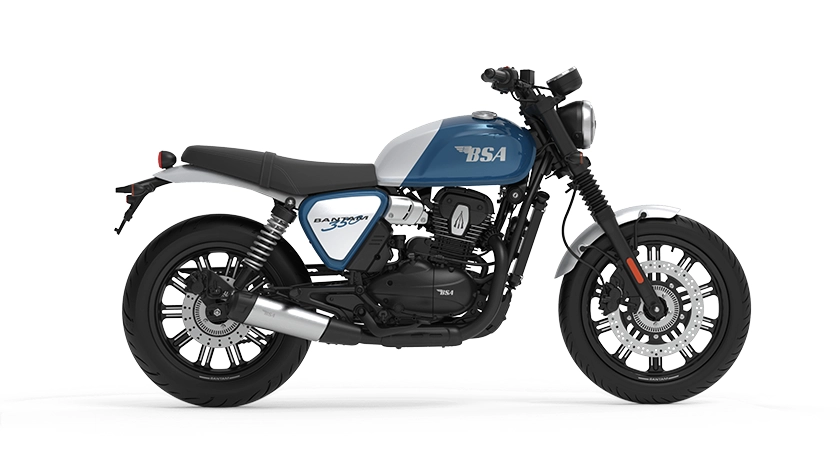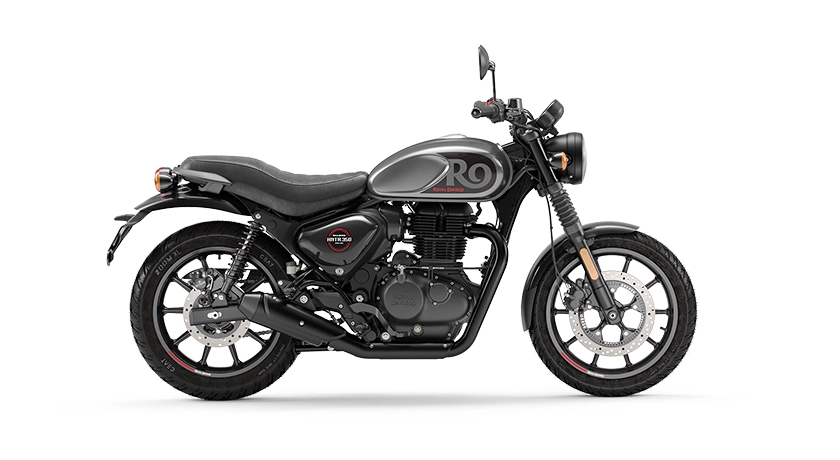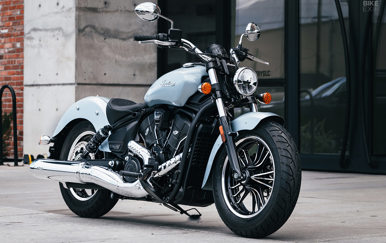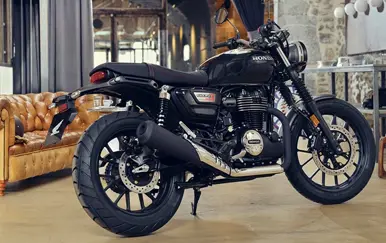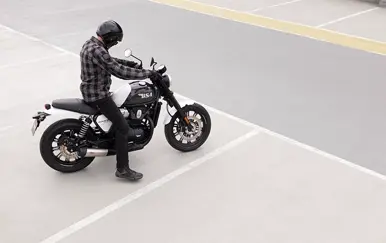The GB350S has been the best-selling modern classic for 7 months in a row this year, according to the MCIA Press Statistics, which begs the question: at £3,999, has Honda finally produced the bike we all needed?
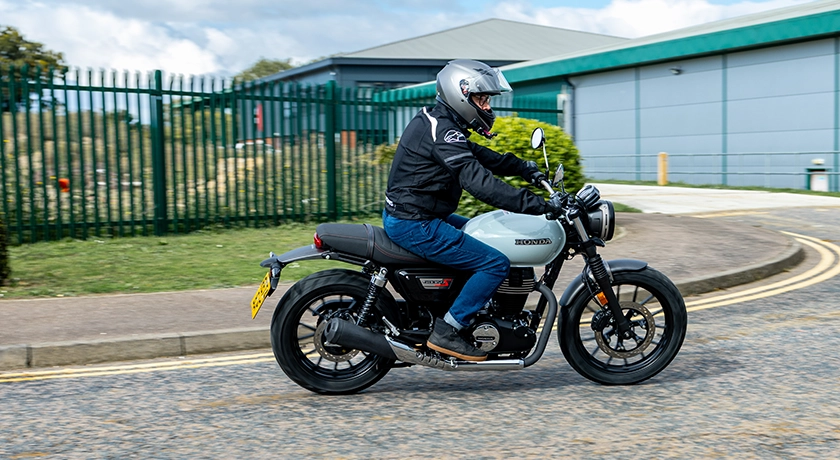
Looks & Styling on the Honda GB350S
I thought I’d kick this review off first by talking about the way the GB looks, as arguably, it is one of the best-looking retros of this year, in my opinion. The only particular downfall is the limited colourways, if I had to mention something, with the only offerings being Puco Blue, Gunmetal Black Metallic & Pearl Deep Mud Grey currently.
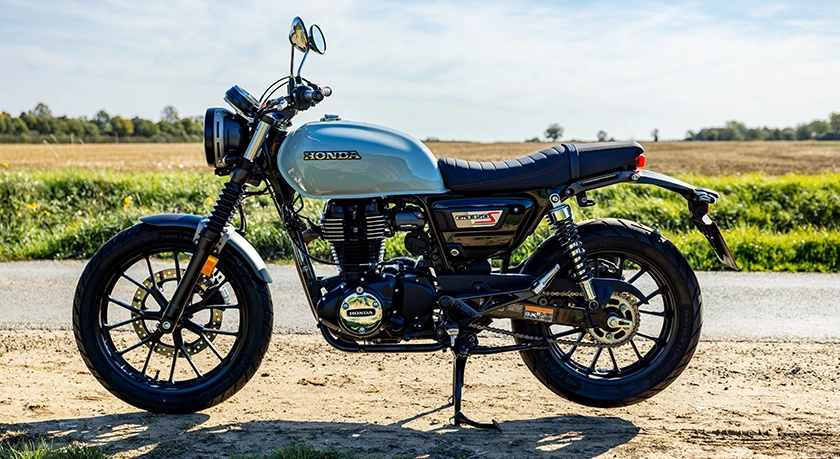
All too often, we see modern retro motorcycles being produced that (in my eyes) miss the point of them being retro by being overpowered by an overly modern feel in one way or another like the Royal Enfield Classic 650 we recently had in for review, for example, which is why I think the GB has gained so much success with its sales figures, alongside its incredibly competitive price, of course.
Being a Japanese-built Honda, naturally, everything feels of superior quality, and the quality of this machine feels the same as any other in Honda’s lineup, even at the price that it is. I particularly loved the finish of the all-metal tank with the classic Honda badge, the slightly bronze wide handlebars and the nicely stitched retro-style seat; it’s all very Honda.
2025 Honda GB350S Engine | Long Stroke Single
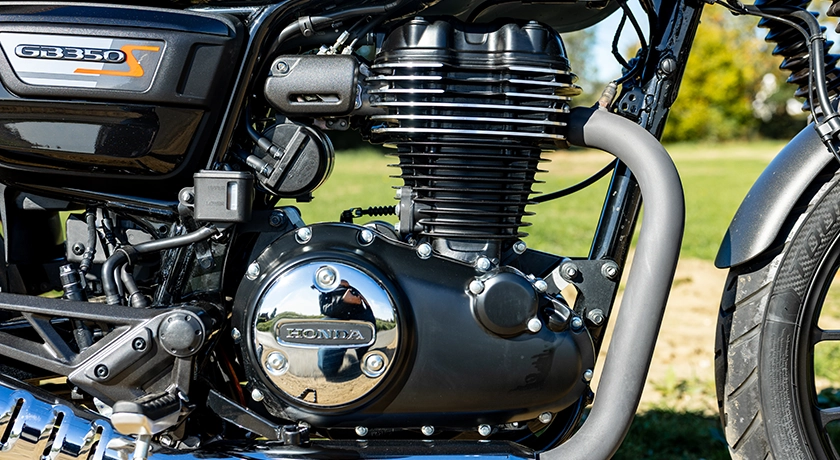
Much like its direct rivals, the BSA Bantam 350 and Royal Enfield HNTR 350, the GB is also a 350cc and also air-cooled too.
It makes 20.8hp at 5,500rpm and 29nm of torque at 3,000rpm from its long stroke single and sounds fantastic too, it has that proper old school thump at low revs even with its factory exhaust. It’s very characterful.
It’s mated to a 5-speed gearbox, which feels more like a 4-speed with a 5th gear overdrive, as it only seemed to like 5th at 70mph, so whilst it’s only got 5 gears, the gear ratios are very usable and versatile.
It’s the kind of bike that likes low revs because of its peak torque coming in at a low 3,000rpm, which in turn, means it can also get up to 112mpg or 354 miles to its 15-litre tank according to Honda.
Whilst the power is on the low side, it is very usable and easy to get along with, partly thanks to its assist and slipper clutch too. If I were to be honest, though, I never found the power to be a problem in any scenario until I took it onto the 70mph dual carriageways and motorways.
On A-Roads, B-Roads, single track lanes and around town, the GB was nearly perfect in my eyes with a reasonably tight but relaxed chassis and progressive power, but as soon as I took it on 70mph roads, the GB lacked that overtaking power you sometimes require for safety as it stuck at 70 flat out with no more to give.
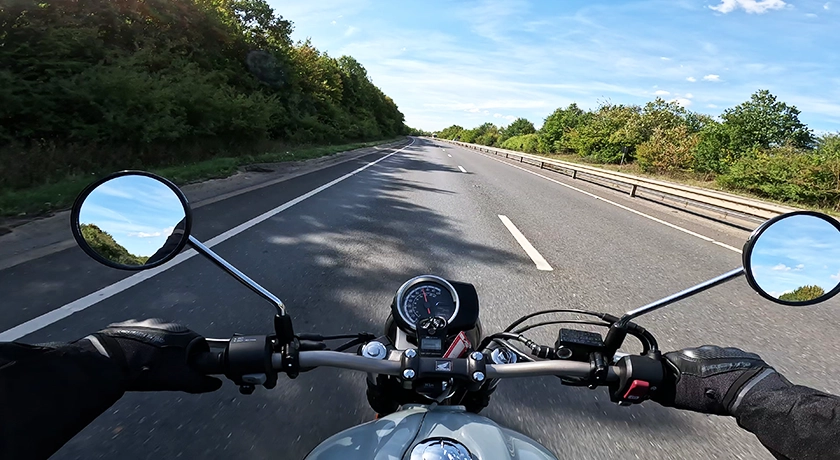
Honda GB350S Handling | Brakes, Suspension & Wheel
As I mentioned, the GB has a decent turn-in speed and fairly direct handling, which is partly due to the premium Metzeler rubber that Honda has fitted around the 19-inch front wheel and 17-inch rear wheel. The GB also doesn’t weigh a great deal at 178kg, helping its overall dynamic handling, which is only further helped by the narrow single cylinder powering the GB.
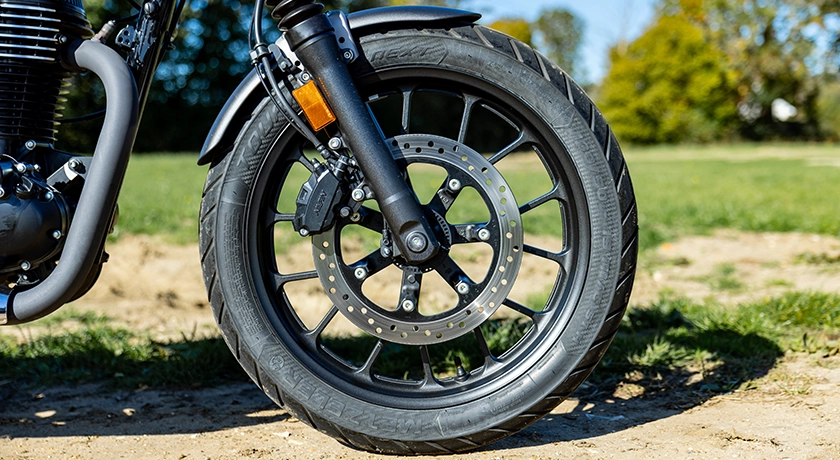
The rubber gaiter-clad 41mm telescopic forks and twin rear shocks take most things in their stride, being reasonably soft and proving excellent on the single track, bumpy lanes, but sometimes the suspension is a little harsh on the larger bumps and can throw you about a bit, but overall, I had no complaints.
It’s direct enough when it wants to be and proves plentiful if ridden at a slower pace, which, in my eyes, is where the GB properly excels.
The brakes are also fairly standard, with a twin-piston Nissin caliper stopping a 310mm disc at the front and a single-piston Nissin slowing down the 240mm disc at the rear. For the type of bike it is, the power and the weight, it proved perfectly fine. Nothing exciting or stand out, but just does the job.
Honda GB350S Seat Height & Comfortability
The geometry is also very relaxed on the GB. The 27-degree rake means it leans more into its relaxed nature over something a bit more aggressive.
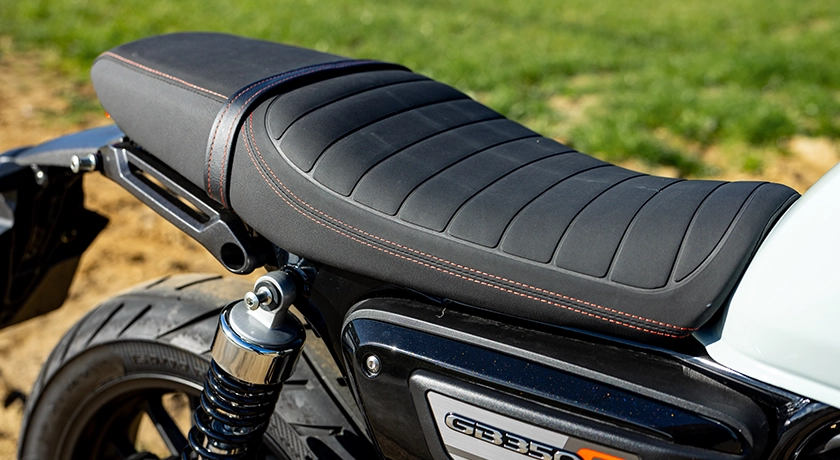
The standard 800mm seat height also naturally leans into this, leaving the GB feeling all very neutral. It doesn’t particularly force you into aggressive riding or have you lean over in any direction, but instead, works with the low-down grunt of the engine and makes the overall package from the handling to the engine, to the seat position and comfort, all very civilised.
Honda GB350S | The Dash, Switchgear & Lighting
The overall ‘cockpit’ layout of the GB350S is very simplistic too, not in a bad way, but in a way that lends itself well to the bike's style.
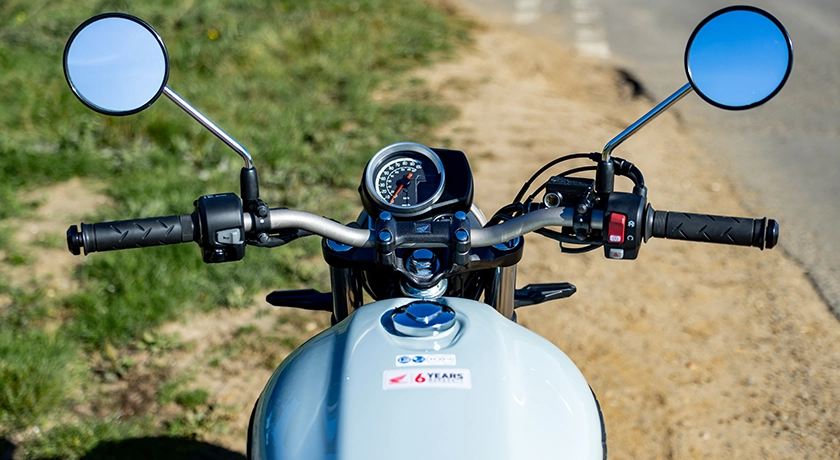
Naturally, the only thing you see of the machine you’re sat upon is the dash, bars and switchgear, and this is where a lot of manufacturers miss the point of retros, in my opinion, with fancy TFTs and overly modern setups that make it feel less classic and more 21st century.
That’s not entirely the case on the GB. Here, we have a simplistic round clock with a sweeping analogue speedo and a little negative LCD tucked in the corner, neatly hidden but still clear and easy to see.
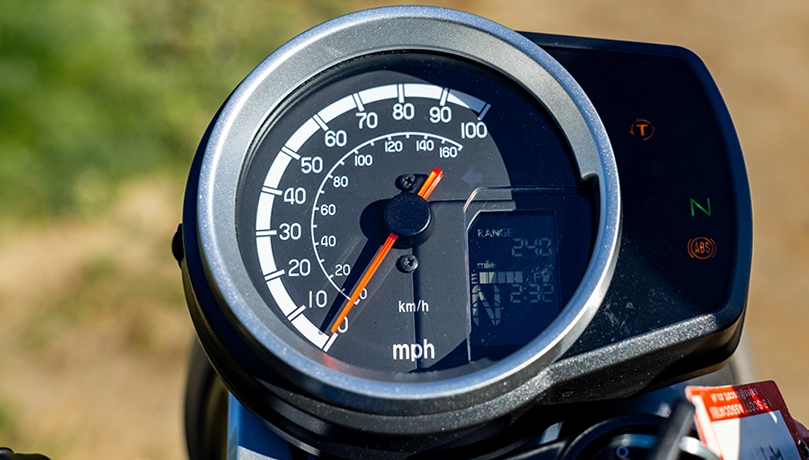
It displays your usual trip data and economy stats like MPG and fuel range, alongside a voltmeter to keep an eye on your battery health, controlled via two small buttons hidden on the left side of the cluster. It does have a little ‘Eco’ light, which I tend to dislike on modern retros, but it’s discreet enough that it doesn’t really interfere with the overall character.
It sits in the middle of particularly uncluttered wide bars that give the GB an overall controlling, but relaxed riding position, all aiding that classic feel. Switchgear is also typical Honda. Tactile, easy to use and simplistic. Nothing fancy, but as with everything else on the GB, it gets the job done.
As per most bikes produced in 2025, the GB also utilises LED lighting all around. We get a circular LED headlight at the front with a small piece of accentuating trim around it, an LED tail and LED indicators which look like they’ve been taken from some of Honda’s more modern styled bikes, but somehow it mostly all works.
As I’ve noted before, I’m not always the biggest fan of LED lighting on modern classics, as I feel it takes away the ‘classic’ aspect of them and leans more into the modern side of things, but nonetheless, it’s 2025, and LED lighting is mostly standard now.
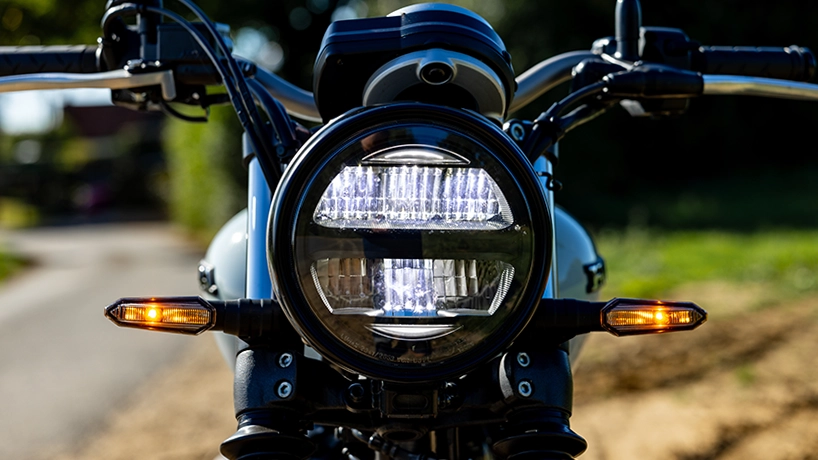
I feel like the balance of modern to retro has been achieved well on the GB. It has the outright character of a classic with features that are clearly modern, but don’t interrupt the overall charm or experience.
If you like the look of the Honda GB350S but aren’t quite sure it’s right for you, then the Royal Enfield HNTR 350 and BSA Bantam 350 might be worthy alternatives.
The HNTR has a very similar feel to the GB350S, although it does come with slightly less power at 20hp compared to the GB’s 20.8hp. Torque is also slightly lower at 27Nm, but still close to the Honda’s 29Nm. However, it does peak higher in the rev range, meaning the GB delivers its torque a bit sooner.
The HNTR also comes with a slightly smaller 13-litre tank, and you’ll be working with a little more weight too - 181kg compared to the GB’s 178kg. On the flip side, the seat height is a touch lower at 790mm, which may suit some riders better. Both bikes come with a split LCD/analogue dash, so it’s a matter of personal preference.
And when it comes to price, the HNTR has a small edge — coming in around £100 cheaper at £3,899.
Alternatively, the BSA Bantam 350 is another strong option. Unlike the GB350S, it comes with a significantly higher power output of 29hp, and slightly more torque at 29.6Nm — although again, this torque kicks in higher in the rev range.
Fuel capacity is the same as the HNTR at 13 litres, and it’s heavier than the GB at 185kg. Seat height, however, matches the GB exactly at 800mm. You’ll also find a more modern, fully LCD dash compared to the GB’s more classic mixed setup.
And the best part? The Bantam is the most affordable of the three, coming in at £3,499, which is about £500 cheaper than the GB350S.
2025 Honda GB350 Verdict
Personally, I think Honda has hit the mark on this model. It is not too dissimilar in pricing to the entirely Indian made BSA or Royal Enfield, and when you consider it’s a Japanese Honda, I’d say that is quite impressive.
Yes, it may lack in top speed power, interesting colour choices, and (at least in my opinion) comes with LED lighting when I reckon all modern classics don’t need this, but for its small inconveniences or stylistic choices, it does so much right.
It’s not often a modern classic comes about that actually carries the feeling of an old school bike, but that’s exactly what the GB does. It’s an honest bike, one that doesn’t try to be something it’s not but instead owns up to being a simple, back-to-basics machine that just gets the job done, all whilst looking great at the same time.
Pros
-
Competitive Price
-
Honda Build Quality
-
Genuine Classic Feel & Character
Cons
-
Limited Top Speed
-
Limited Range of Colour Options
The Final Stop
If you’ve enjoyed this review and are now on your way to the Honda showroom to pick up your own GB but need somewhere to insure it, or even if you have your own bike already and need motorcycle insurance, head to Lexham direct to get a quote today!

